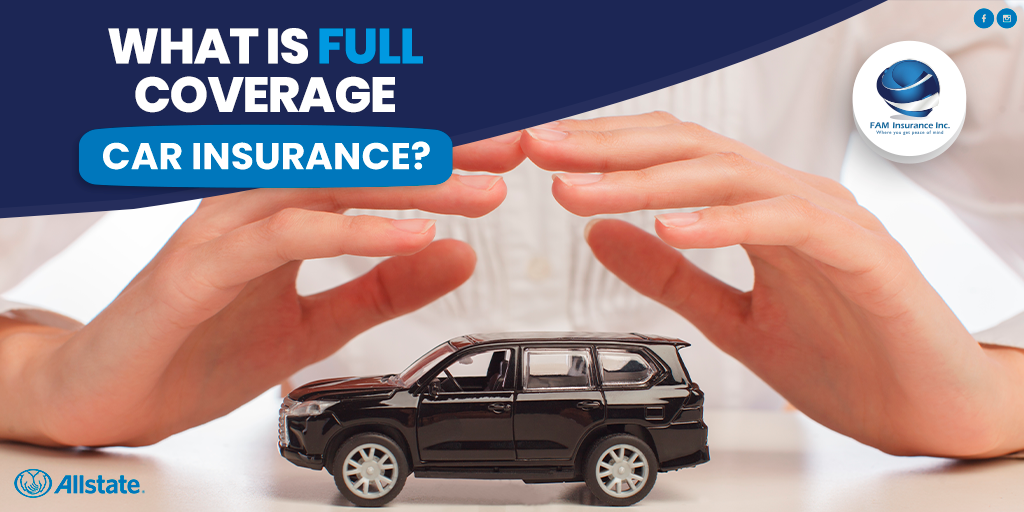When people talk about “full coverage” car insurance, they’re often referring to a combination of coverages that help protect a vehicle. But, there’s really no such thing as “full coverage” for your car.
Some coverages (such as auto liability) are required by state law. Others (such as rental reimbursement) may be optional, depending on the insurer and your situation. So, it’s up to you to choose car insurance that fits your needs — making sure your coverage meets state requirements and helps you protect your car.
What does “full coverage” actually mean?
There’s no formal definition for “full coverage” since it’s not a real auto insurance term. But it typically refers to a policy that has liability coverage plus comprehensive and collision. That way, you’re not only covered if you have to pay for someone else’s injuries or repairs but also for repairs to your own vehicle.
Remember, you won’t see the term “full coverage” on an auto policy. When you get a quote, for instance, you’ll instead see a list of auto insurance coverages available to you, depending on your state and other requirements.
Car insurance coverage options at a glance
|
Type of Car Insurance Coverage
|
Required or Optional
|
|---|---|
|
Liability Coverage
|
Required |
|
Comprehensive Coverage |
Optional (unless you lease or finance your vehicle) |
|
Collision Coverage |
Optional (unless you lease or finance your vehicle) |
|
Medical Payments Coverage/Personal Injury Protection |
Required in some states |
|
Uninsured and Underinsured Motorist Coverage |
Required in some states |
|
Rental Reimbursement Coverage |
Optional |
Liability Coverage
Liability coverage is typically included in all auto insurance policies, as it’s required by law in most states. Bodily injury liability coverage helps pay for another person’s medical expenses if you cause an accident. Property damage liability coverage helps pay for damage you cause to another person’s property in a car accident.
Each state sets minimum liability coverage limits that drivers must purchase. Typically, the liability coverage in an auto insurance policy will contain three limits:
- The maximum payment for bodily injury per person
- The maximum payable for bodily injury per accident
- The maximum payable for property damage
You may want to go beyond the state requirements and buy a policy with higher liability limits. Higher coverage limits typically mean you’ll pay higher premiums, but you’ll have more protection if you cause an accident.
Comprehensive and Collision Coverage
If you are still paying off an auto loan or if you have a lease on your vehicle, your lienholder or financing company usually requires collision coverage and comprehensive coverage. Otherwise, if your vehicle is paid off, these two coverages are typically optional on a car insurance policy.
Collision coverage helps pay to repair or replace your vehicle if it’s damaged in a collision with another vehicle or object (such as a fence). Remember, collision coverage helps protect your vehicle, while property damage liability helps pay for damage you cause to another driver’s vehicle.
Comprehensive coverage helps pay to repair or replace your vehicle if it’s stolen or damaged by things like hail, animal damage or vandalism.
Comprehensive and collision coverage each have deductibles and limits. A deductible is the amount you pay out of pocket toward a covered claim. A limit is the maximum amount your insurance will pay out for a covered claim.
Rental Reimbursement Coverage
Rental reimbursement coverage helps pay for a rental car while yours is being repaired after a covered loss. Be sure to check the coverage limits — typically, rental reimbursement pays up to a certain dollar amount per day, for a set number of days.
Uninsured and Underinsured Motorist Coverage
Uninsured motorist coverage helps protect you against drivers without insurance. If you’re injured in an accident caused by another driver, that driver’s liability insurance will usually help cover medical expenses you incur — unless that driver doesn’t have auto liability coverage. In that case, your uninsured motorist coverage would help pay for expenses related to your injuries.
Underinsured motorist coverage works similarly: It takes effect if the other driver who caused the accident has insurance, but their liability coverage limits are lower than the limits that trigger underinsured motorists coverage in your state. Check your state’s insurance requirements or ask your agent for more information about this coverage.
Medical Payments Coverage or Personal Injury Protection
Medical payments coverage helps pay for your (or your passengers’) medical expenses after an accident, regardless of who is at fault. Covered expenses may include things like surgery or X-rays.
Personal injury protection (PIP) isn’t available in all states, but it’s required in some states. PIP works similarly to medical payments coverage — it helps cover your medical expenses resulting from a covered loss. In some cases, it may also help you pay for other expenses while you’re healing. These expenses may include child care services and lost income as a result of your injuries.
How much does “full coverage” insurance cost?
Recall that “full coverage” auto insurance isn’t an insurance term. It loosely describes coverages that can protect against liability and help cover repairs to your vehicle. The cost of auto insurance depends on how much protection you arrange for your policy, plus other factors – for instance, how often you drive, the type of vehicle you drive, auto insurance requirements in your area, your chosen deductibles and more.
To find the policy that fits your driving needs and budget, compare auto insurance quotes online and choose the same coverage for each quote to get the best comparison.
Finding the right coverage for your car
The right amount of coverage differs from driver to driver. How often you drive, the main reason you use your vehicle and certain state requirements are just some of the determining factors for finding the right amount of coverage. Starting a quote can be a great way to begin understanding your coverage options. Most online quoting systems offer coverage suggestions based on your answers to their questions.
If you already have auto insurance, you can also reach out to your insurer to weigh your best options.

